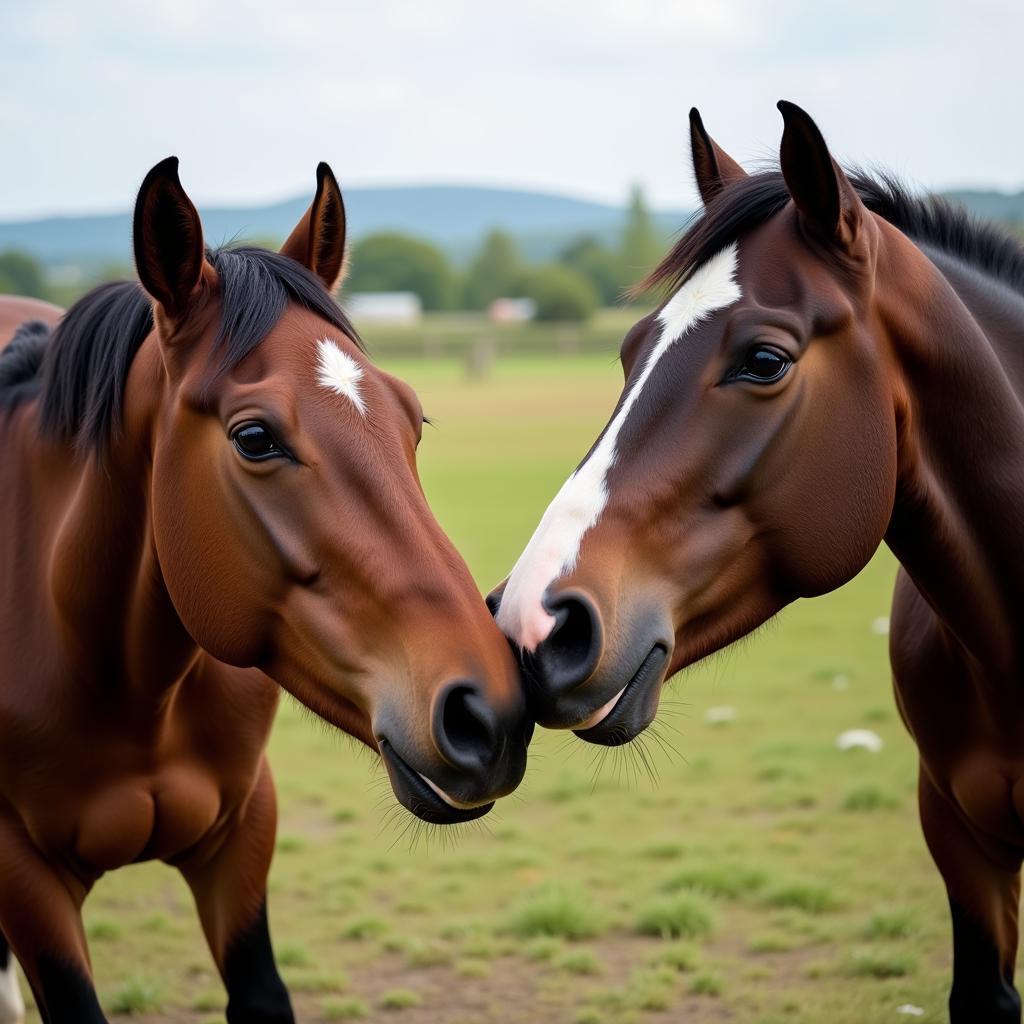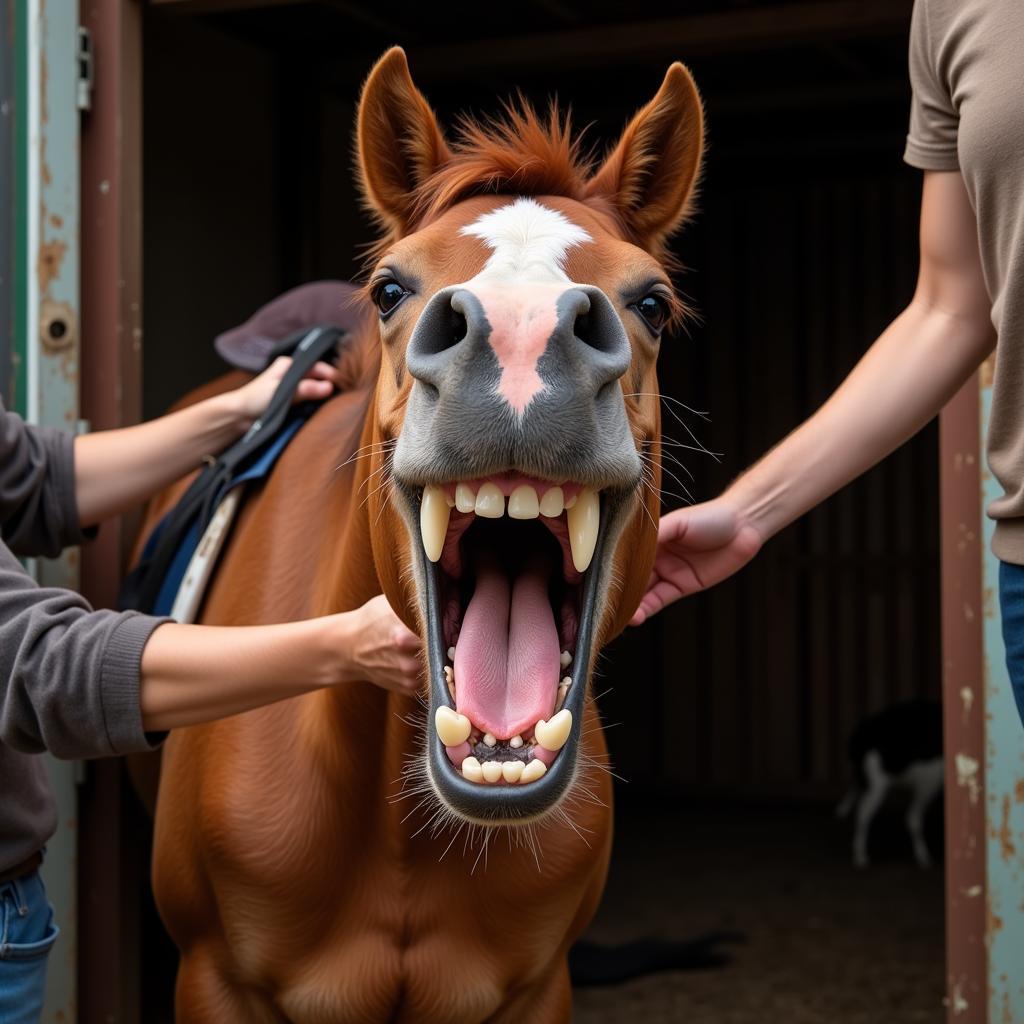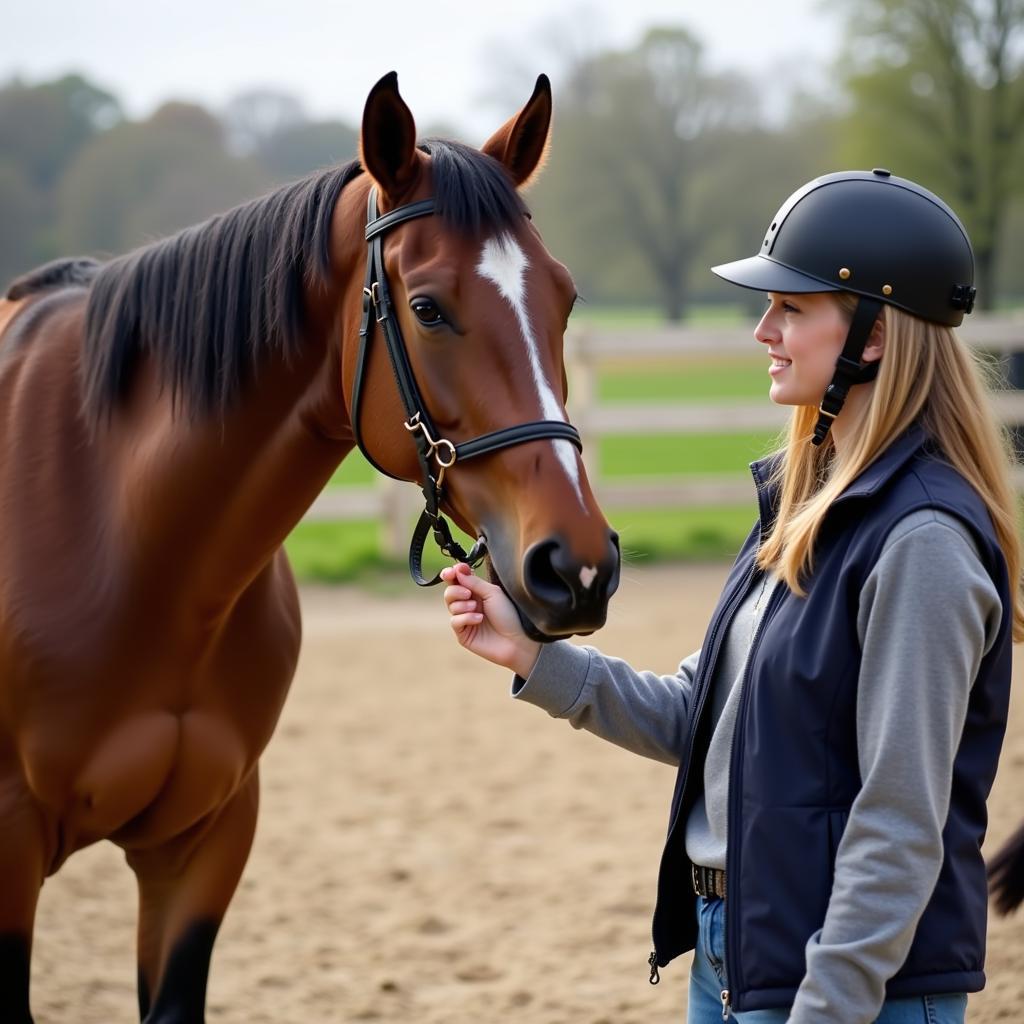A Horse Snap is a quick, upward jerk of the head, often accompanied by a backward motion. Understanding why horses snap can help you build a stronger bond and ensure a safer riding experience. This article will delve into the different types of horse snaps, their causes, and how to address them effectively.
Decoding the Horse Snap: Types and Causes
Horse snaps can be broadly categorized into two types: playful and aggressive. Identifying the type is crucial for appropriate response. Playful snaps are often softer, less forceful, and directed towards other horses or even humans they trust. Aggressive snaps, on the other hand, are more forceful, accompanied by pinned ears, bared teeth, and are a clear warning sign.  Horse Playfully Snapping
Horse Playfully Snapping
What triggers these snaps? Numerous factors can contribute, including discomfort from ill-fitting tack, dental issues, or even boredom. A horse might snap due to frustration during training, especially if they don’t understand the rider’s cues. Sometimes, horses learn to snap as a way to demand attention or treats. In some cases, a horse might be experiencing pain from an underlying injury or condition, causing them to snap defensively.
Identifying Aggressive vs. Playful Snaps
Distinguishing between playful and aggressive snaps requires keen observation. Look at the horse’s overall body language.  Aggressive Horse Snap Are their ears pinned back? Are they showing their teeth? Is their body tense? These are signs of aggression. A playful snap will usually be accompanied by relaxed body language, perhaps even a soft nicker. snap crackle pop horse
Aggressive Horse Snap Are their ears pinned back? Are they showing their teeth? Is their body tense? These are signs of aggression. A playful snap will usually be accompanied by relaxed body language, perhaps even a soft nicker. snap crackle pop horse
Addressing the Horse Snap: Training and Management
Dealing with horse snaps requires patience, consistency, and a clear understanding of the underlying cause. If you suspect a medical issue, consulting a veterinarian is the first step. For training-related snaps, professional guidance can be invaluable. Clear and consistent cues, positive reinforcement, and avoiding punishment are key to successful training. Ensure your horse understands what you’re asking of them.
Tack and Equipment: Ensuring Comfort and Fit
Ill-fitting tack can cause discomfort and lead to snapping. Regularly check your saddle and bridle for proper fit. A poorly fitting saddle can pinch or rub, causing pain. Similarly, a bridle that’s too tight or has a bit that doesn’t suit the horse’s mouth conformation can also trigger snapping. chain lead rope for horses
Environmental Enrichment: Combating Boredom
Boredom can also contribute to snapping behavior. Providing adequate mental and physical stimulation is essential. This could involve turnout time with other horses, toys in the stall, or varied training exercises. keogh crazy horse fight
“Enrichment is crucial for a horse’s well-being,” says Dr. Emily Carter, equine veterinarian and behaviorist. “A bored horse is more likely to develop undesirable behaviors, including snapping.”
Preventing Future Snaps: Proactive Measures
Prevention is always better than cure. Establishing clear boundaries and consistent routines can help prevent snapping. Rewarding good behavior with positive reinforcement is also crucial.  Horse Training with Positive Reinforcement
Horse Training with Positive Reinforcement
“Consistency is key when working with horses,” adds John Miller, a renowned horse trainer with over 20 years of experience. “Horses thrive on routine and clear expectations.”
Dental Care: A Crucial Aspect of Horse Health
Regular dental checkups are essential to rule out any dental issues that could be causing discomfort and leading to snapping. Just like humans, horses can experience toothaches and other dental problems. rings for horses
Conclusion: Building a Stronger Bond with Your Horse
Understanding why a horse snaps is crucial for building a positive relationship. By addressing the underlying causes and implementing appropriate training and management strategies, you can help your horse overcome this behavior and create a safer, more enjoyable experience for both of you. Remember, patience and consistency are key. tendon supplements for horses
FAQ
- What does it mean when a horse snaps? A horse snap is a quick, upward jerk of the head, often a sign of playfulness, irritation, or pain.
- Is a horse snap always aggressive? No, a horse snap can be playful or a sign of discomfort rather than aggression.
- How can I stop my horse from snapping? Address potential causes like ill-fitting tack, boredom, or pain, and consult a veterinarian or trainer.
- Can snapping be a sign of a medical problem? Yes, dental issues, ulcers, or other medical conditions can cause a horse to snap.
- What should I do if my horse snaps aggressively? Immediately move away and consult a professional trainer or behaviorist for guidance.
- Are there different types of horse snaps? Yes, snaps can be playful, aggressive, or due to discomfort.
- Can training help with snapping? Yes, consistent training with positive reinforcement can help address training-related snapping.
For further assistance, please contact us at Phone Number: 0772127271, Email: [email protected], or visit our address: QGM2+WX2, Vị Trung, Vị Thuỷ, Hậu Giang, Việt Nam. We have a 24/7 customer support team.